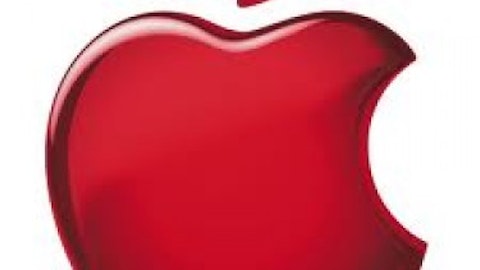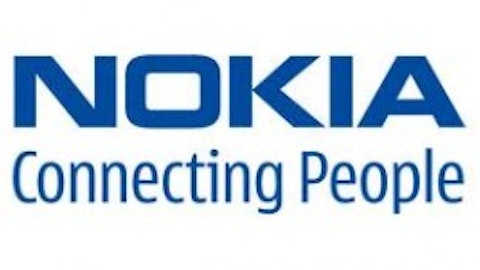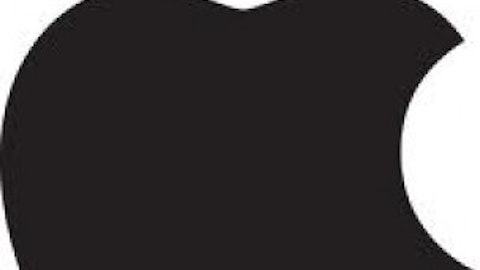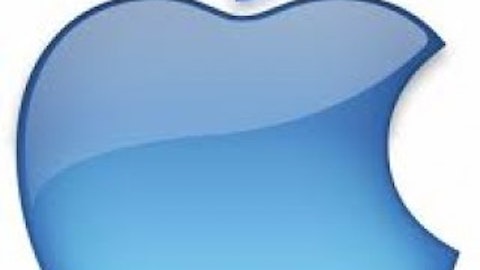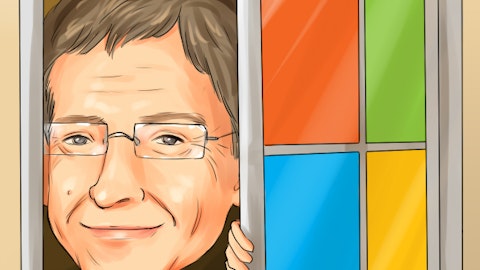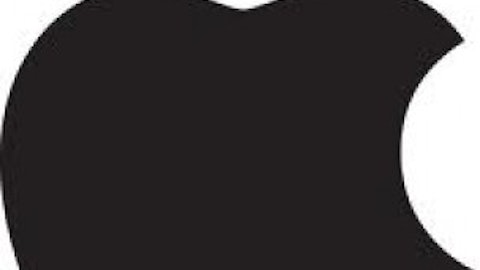Two big products have dominated tech and finance headlines lately: Google Inc (NASDAQ:GOOG) Glass and Apple Inc. (NASDAQ:AAPL)’s rumored iWatch. These two products have ignited a debate about the future of “wearable technology” – supporters believe it is an inevitable next step in our gradual transformation into constantly-connected cyborgs, while critics believe that the absurdity of wearing a computer on your face will never be considered mainstream. Just how are Google Inc (NASDAQ:GOOG), Apple Inc. (NASDAQ:AAPL), and other companies planning to change how we regard the connection between fashion and technology, and will these ideas become profitable in the near future?
Google Glass is a project that has been in development since April 2012. The “augmented reality head mounted display”, as Google Inc (NASDAQ:GOOG) calls it, is a pair of wraparound glasses that contains a tiny computer on the side, which projects a heads-up display before the users’ eyes. The system is hands-free, and is operated by voice, head movements and touching the frame.
Glass runs on Android, and uses either WiFi or Bluetooth to connect to the Internet through the user’s cellphone. Once connected, the user can access many of Google’s cloud-based apps on the go, such as walking directions from Google Maps, alerts from Google Inc (NASDAQ:GOOG) Now, instant translations on Google Translate, or video chats via Google Hangouts – all without looking down and accessing a smartphone, tablet or computer. If successful, Google Inc (NASDAQ:GOOG) will be one step closer to its stated dream of “ubiquitous computing” – a sci-fi reality in which Internet-enabled computers will be accessible anywhere and ready to instantly respond to our requests.
Glass is scheduled to be released in the fourth quarter of this year, but will these glasses, which have the tendency to make people look comically like cyborgs, ever gain mainstream adoption?
Google Inc (NASDAQ:GOOG) understands how steep the challenge to make Glass look fashionable will be, and has reportedly been in talks with Warby Parker, an e-commerce retailer of trendy glasses, to help it design more fashionable frames. The partnership is not official yet. Google also recruited the help of fashion designer Diane von Fursternberg, who organized a runway show of models wearing different colored versions of Glass at Fashion Week.
Nonetheless, Glass will be an acquired taste, and with an initial price tag of $1,500 – a superfluous luxury item, despite its revolutionary functions.
In my opinion, Glass shouldn’t be initially marketed to the public, as Google is trying so hard to do. It should be marketed to industries that need these heads-up displays for everyday tasks – such as teachers, tour guides, waiters, police officers, and soldiers.
People in these fields can use Glass for more practical purposes, instead of entertaining the vague notion that you can instantly transform yourself into an Internet-connected robot. This would visibly demonstrate the usefulness and practicality of Glass, and make it a more familiar sight to the public. Only then would mainstream adoption would become a possibility.
Apple iWatch
Compared to Google’s ambitious Glass project, the rumored iWatch is a much smaller gamble for Apple Inc.(NASDAQ:AAPL). Apple first caught everyone’s attention when it started testing designs with curved glass earlier this year. Then reports and rumors quickly followed about the company producing a smart watch that could synchronize with the iPhone.
However, an iWatch would not be an original idea from Apple Inc. (NASDAQ:AAPL).
Pebble Technology beat Apple Inc. (NASDAQ:AAPL) to the punch earlier this year with its best selling Pebble Watch – which synchronizes to Android and iOS devices over a Bluetooth connection. The Pebble Watch allows users to check their e-mail or text messages directly from the watch. It can also sync with the phone’s GPS and display information about the MP3 library. Pebble announced that it had already shipped 6,000 Pebble Watches, which retails for $150, since its release in late January.
However, the Pebble is not the only smartwatch on the market. The Cookoo, which sells for $130, has a battery that can last a year, as opposed to Pebble’s once-a-week charge. Sony’s $130 SmartWatch has a touchscreen. Motorola’s Motoactv, which includes a heart rate monitor, sells for $150, while MetaWatch’s $300 STRATA features more fashionable aesthetics geared towards female customers.
In other words, the market is already getting increasingly fragmented, and Apple’s iWatch – which still doesn’t have a firm release date or any technical specifications yet – will be arriving pretty late to the party.
I consider Apple’s rumored smartwatch to be the antithesis of Google Glass, as it also characterizes how the two companies are run. Whereas Google is unafraid to try ambitious new projects that may not be profitable – such as a driverless car, space travel or a human-powered monorail – it isn’t afraid to experiment with new ideas. Meanwhile, Apple Inc. (NASDAQ:AAPL), which is still stuck in a tailspin after the loss of Steve Jobs (and with him, new ideas) is now producing timid new products such as the iPad Mini and the iWatch, instead of pushing the envelope with new creations like Google Glass.
Willow Glass
At the forefront of the wearable technology revolution is Corning (NYSE:GLW). Corning has been a direct beneficiary of the smartphone revolution, since its highly scratch-resistant Gorilla Glass is considered the industry standard. A second generation, Gorilla Glass 2, was introduced last year. Last October, Corning reported that over one billion mobile devices worldwide used Gorilla Glass.
Looking forward, Corning estimates that in three years its bendable and rollable Willow Glass will be ready to be released. Corning shipped samples of Willow Glass to phone, tablet and television manufacturers last June in an effort to see what next generation products could be created.
In the near future, Willow Glass could be used in tandem with rollable LCD displays to create transparent, wraparound smart bracelets, or could be integrated into clothing or purses to create seamlessly futuristic products with touch-enabled surfaces.
The Foolish Bottom Line
Although everyone’s paying attention to Glass and the iWatch now, it’s not the products that are important, but rather what they represent for the underlying companies.
Google is daring, but Apple is not. Google is striving to become the great market innovator, while Apple is gradually falling in line as a market follower. It’s too early to tell if wearable fashion will ever be a reality, even with incredible technological advances like Willow Glass, but the possibilities are quite tantalizing. If that happens, it’s likely that Google Glass, and not the Apple iWatch, will be considered the seminal product.
The article The Future of Wearable Technology originally appeared on Fool.com and is written by Leo Sun.
Copyright © 1995 – 2013 The Motley Fool, LLC. All rights reserved. The Motley Fool has a disclosure policy.

